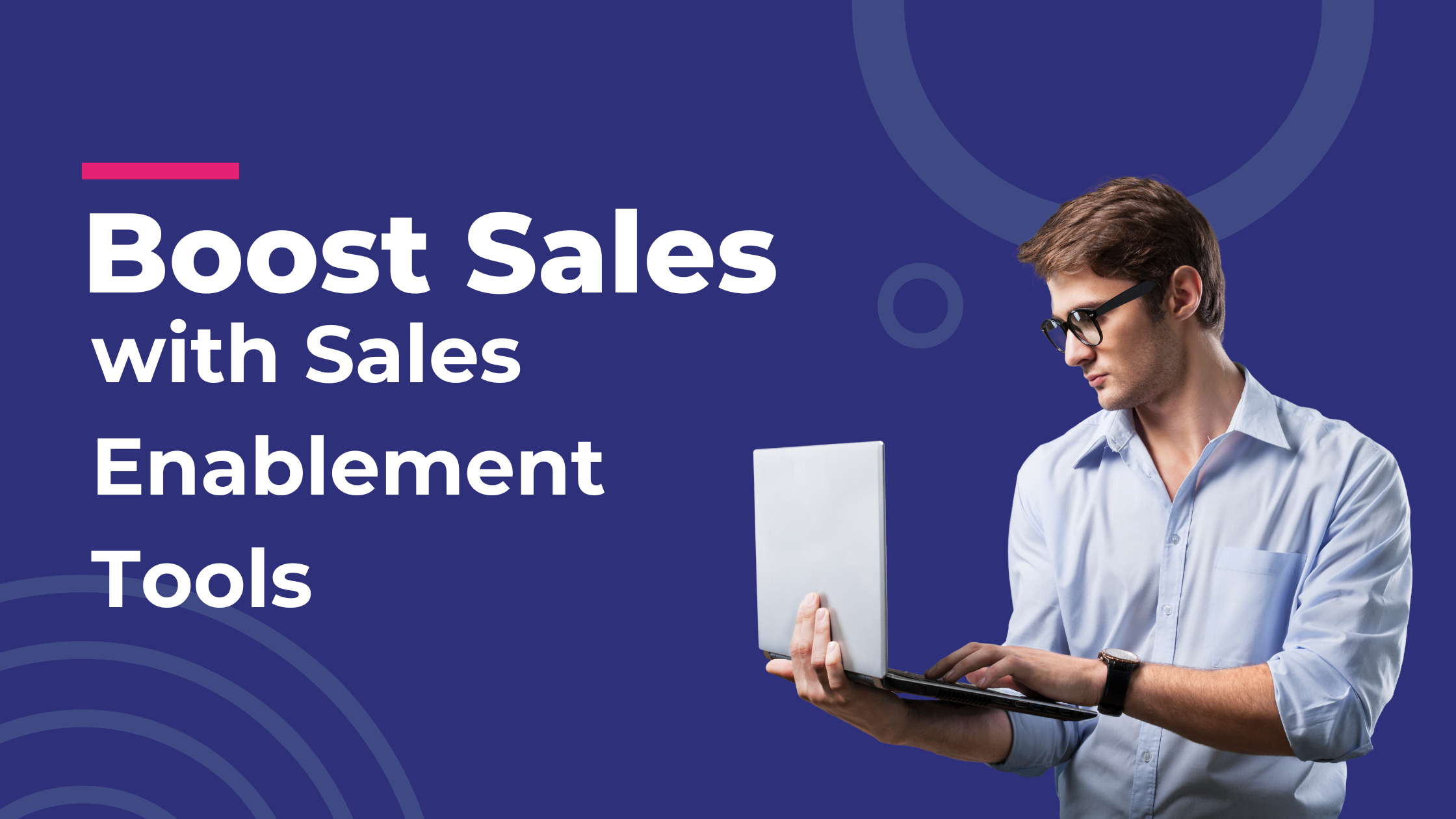The Difference Between Inbound and Outbound Sales

Leveraging the Power of These Strategies
Discover the critical differences between inbound and outbound sales strategies and determine why implementing both is likely best for your business. Before you can leverage the power of these strategies, we must first understand the basics.
Understanding Inbound Sales
Inbound sales is a strategy that focuses on attracting and engaging potential customers through various channels. Sales and marketing alignment ensures a successful campaign that can be implemented repeatedly to achieve your business goals.
Content is used to attract your ideal client profile and buyer personas.
While your sales team is reaching out to cold customers that meet your ideal client profile, your marketing team is creating:
- valuable content like blogs, ebooks, and white papers
- optimizing websites for search engines
- personalizing emails and landing pages
- leveraging social media platforms to generate leads
Meanwhile, inbound teams are reaching out to the contacts from these marketing efforts once they've reached a point of readiness. What is the point of readiness, you ask? It's the definition that sales and marketing agree on, which is either a Marketing Qualified Lead (MQL) or a Sales Qualified Lead (SQL).
Companies often define MQL in one of two ways. First, does MQL mean these contacts are ready to be marketed too? For instance, they aren't sent any nurture emails besides blog subscriptions in the lead stage. The second definition is that they have been nurtured by marketing and are ready to speak with a Business Development Representative (BDR) for further qualifying before setting up a demo or readiness to speak with the sales team.
Further, once a lead is considered an SQL, the customer moves to the Opportunity stage, and in most cases, a deal is opened. HubSpot has definitions for each of these, and companies often use HubSpot's MQL and SQL definitions.
We also recommend leveraging customized lead scoring and leveraging the scoring to automate the sales process. For example, if a lead is generated from your inbound efforts at the awareness stage, these contacts likely still belong to marketing. But, if they have hit certain criteria, and their lead score is now 70 (your defined MQL score), the leads are passed to the appropriate team, lifecycle stages are updated, notifications are sent out, and more.
Did you know that the 'likelihood to close score' on the contact record is powered by AI (artificial intelligence) and will improve over time based on the data you collect and the customers you win and lose?
Another key aspect of inbound sales is automation tools to streamline the sales process. These tools help nurture leads, track customer interactions, and analyze data to improve sales strategies. By automating repetitive tasks and personalizing communication, companies can effectively engage with potential customers and provide a personalized experience.
Inbound efforts also emphasize the importance of understanding the buyer's journey and creating targeted content for each stage. By mapping out the customer's path from awareness to consideration and then decision, companies can provide the correct information at the right time, guiding potential customers toward purchasing.
Overall, inbound is a customer-centric approach that focuses on attracting, engaging, and delighting potential customers through valuable content, personalized communication, and a deep understanding of the buyer's journey.
Benefits of Inbound Sales
There are several benefits of adopting an inbound sales strategy for your business:
1. Targeted Leads: Inbound sales focus on attracting qualified leads actively searching for solutions. This results in higher-quality leads that are more likely to convert into customers.
2. Cost-Effective: Inbound sales strategies like content marketing and search engine optimization can be more cost-effective than traditional outbound sales techniques like cold calling or direct mail campaigns.
3. Long-Term Relationships: Inbound sales help build trust and establish long-term customer relationships by providing valuable content and personalized experiences. This can lead to repeat purchases and customer loyalty.
4. Data-Driven Insights: Inbound sales leverages marketing automation tools to track customer interactions, analyze data, and gain insights into customer behavior. This data-driven approach allows businesses to improve their sales strategies and continuously make data-backed decisions.
Adopting an inbound sales strategy can result in targeted leads, cost savings, long-term customer relationships, and data-driven insights for your business.
Exploring Outbound Sales
On the other hand, outbound sales is a more traditional approach and one we're all familiar with. It involves proactively reaching out to potential customers who meet your ideal client profile. It includes activities such as:
- Cold calling
- Sending cold emails
- Attending trade shows
- Conducting direct mail campaigns
The goal of outbound sales is to initiate contact with potential customers and persuade them to make a purchase.
However, outbound efforts can be more challenging in today's digital age, as customers increasingly resist unsolicited communication. It requires a well-crafted pitch, effective communication skills, and a deep understanding of the target audience. Outbound communications also tend to have a lower response rate than inbound sales because they rely on reaching out to a larger pool of potential customers, many of whom may not be interested or ready to purchase.
Despite these challenges, it can still be effective in certain industries, products, or services. Outbound techniques can benefit your B2B sales teams, where building personal relationships and direct communication with key decision-makers is crucial.
In summary, outbound sales is a proactive approach that directly reaches potential customers. While it may have lower response rates and face challenges in today's digital age, it can still be effective in certain industries and for specific target audiences.
Advantages of Outbound Sales
While outbound sales may face challenges in today's digital age, it still offers several advantages for businesses:
1. Proactive Approach: Allows companies to take a proactive approach by directly reaching out to potential customers. This can lead to immediate sales opportunities and faster conversion rates.
2. Tailored Messaging: Companies can tailor their messaging based on individual customer needs. This personalized approach can resonate with potential customers and increase the chances of making a sale.
3. Control Over Sales Process: Provide more control over the sales process, as companies can actively pursue leads and guide them through the sales funnel. This can result in a more efficient and streamlined sales process.
4. Effective for B2B Sales: Particularly effective for B2B sales, where building personal relationships and direct communication with key decision-makers is crucial.
Choosing the Right Strategy for Your Business
When deciding between inbound and outbound sales strategies, it's important to consider the nature of your business, target audience, and resources available. Here are some factors to consider:
1. Industry and Target Audience: Certain industries or target audiences may respond better to these sales approaches. Try tactics out and see what works and what doesn't. For example, inbound sales may be more effective if your target audience is highly active on social media and values informative content. On the other hand, if your target audience consists of key decision-makers in B2B companies, outbound sales may be more suitable.
2. Budget and Resources: Consider your budget and resources available for sales and marketing efforts. Inbound sales strategies often require content creation, search engine optimization, and marketing automation tools, which may require upfront investments. Outbound sales may require investments in sales training, cold calling software, or direct mail campaigns.
3. Sales Cycle: Evaluate the length and complexity of your sales cycle. Inbound sales strategies are typically more effective for longer sales cycles, focusing on building relationships and providing valuable content over time. Outbound sales can be more effective for shorter sales cycles or immediate sales opportunities.
4. Integration and Alignment: Consider how these strategies align with your business goals and marketing efforts. For optimal results, a cohesive strategy integrates sales and marketing activities.
Accelerate Your Pipeline: Sales & Marketing Alignment
By combining the strengths of both inbound and outbound sales and marketing strategies, businesses create a powerful and dynamic approach that accelerates their sales pipeline.
Generally, this happens with a well-aligned marketing and sales team. Together, they attract and engage qualified leads through valuable content and personalized experiences. In contrast, outbound sales can proactively reach potential customers and initiate immediate sales opportunities. This is often where companies will implement an ABM approach that double-teams these efforts.
An example is when the sales team enrolls their target contacts into a sequence and conducts cold outreach. Meanwhile, the marketing team is running an ad campaign targeting these same customers.
This combination allows companies to reach a wider range of prospects and cater to different preferences, ultimately leading to a more robust and efficient sales process. Businesses that integrate inbound and outbound strategies optimize their lead generation, conversion rates, and overall sales performance, resulting in accelerated growth and success.
In conclusion, understanding the differences between these strategies is crucial for businesses looking to optimize their sales processes. While inbound sales focus on attracting qualified leads through valuable content and personalized experiences, outbound sales proactively reach out to potential customers directly.
By combining the strengths of both strategies, businesses can create a dynamic approach that accelerates their sales pipeline and drives growth. Whether your business leans more towards inbound or outbound sales, it's essential to consider your industry, target audience, budget, and sales cycle when deciding. You can optimize your lead generation, conversion rates, and overall sales performance by integrating both approaches and aligning them with your overall business goals. Explore the possibilities of combining your strategies to propel your business forward and achieve success.


